In the competitive landscape of compact vehicles, the Citroën C3 and Renault Clio represent two standout options that appeal to different types of drivers. Both models offer unique features and innovative technologies, making them solid contenders for anyone in the market for a new car. In this article, we will delve into a comprehensive comparison of the Citroën C3 and the Renault Clio, focusing on their technical specifications, innovations, and overall driving experience.
Citroen C3 vs Renault Clio – Differences & prices compared
Both models have their strengths – but which one suits you more?
Compare performance, efficiency, price and space directly: Citroen C3 or Renault Clio?
Design and Body Type
The Citroën C3 is classified as an SUV, characterized by a sporty stance and a high driving position that provides excellent visibility. With a length of 4015 mm, a width of 1755 mm, and a height of 1567 mm, it strikes a balance between compact agility and spaciousness.
On the other hand, the Renault Clio is a hatchback, traditionally designed to be more aerodynamic and sporty. It measures 4053 mm in length, 1798 mm in width, and stands at a height of 1440 mm. The design philosophy of the Clio emphasizes a sleek silhouette that appeals to urban drivers seeking style and practicality.
Engine Options and Performance
Under the hood, the Citroën C3 offers a variety of engine types, including petrol and electric options. The petrol engine delivers a power output of up to 113 HP, while the electric variant provides a range of up to 326 km on a single charge. Additionally, the C3 boasts an impressive acceleration of 0-100 km/h in approximately 10.6 seconds.
The Renault Clio, with its diverse range of engines, includes full hybrid, petrol, and LPG options, with power outputs ranging from 67 HP to 143 HP. Notably, the Clio can accelerate from 0-100 km/h in as little as 9.3 seconds, showcasing its sporty capabilities. The hybrid engine option further elevates its efficiency, achieving fuel consumption figures as low as 4.3 L/100 km.
Transmission and Drivetrain
Both the Citroën C3 and Renault Clio come equipped with front-wheel drive, ensuring confident handling and stability. The C3 offers a choice between a manual gearbox and an automatic transmission, while the Clio provides a wider selection with options for automatic, manual, and CVT transmissions, catering to various driver preferences.
Interior Comfort and Technology
Inside the Citroën C3, drivers and passengers are greeted with a modern and comfortable cabin featuring ample legroom and headspace for up to five occupants. The C3 also boasts a trunk capacity of 310 liters, suitable for daily errands or weekend getaways.
The Renault Clio, however, edges slightly ahead with a larger trunk capacity of 391 liters. Its interior leverages user-friendly technology, including a responsive infotainment system that seamlessly integrates smartphone connectivity. Both models feature a variety of safety and convenience technologies, enhancing the overall driving experience.
Fuel Efficiency and Emissions
Fuel efficiency is critical for many consumers, and here the Citroën C3 and Renault Clio both perform admirably. The C3 showcases a fuel consumption figure of 5.6 L/100 km for its petrol variant and an impressive 17.4 kWh/100 km for the electric model, producing zero CO2 emissions.
The Clio capitalizes on its hybrid technology to achieve some of the best fuel consumption rates in its class, with figures starting from 4.3 L/100 km. This aids in keeping CO2 emissions as low as 97 g/km, making it an excellent choice for environmentally conscious drivers.
Final Thoughts
In summary, both the Citroën C3 and Renault Clio have their merits depending on the needs of the driver. The C3, with its SUV body style, electric options, and spacious interior, caters to those looking for versatility and comfort. In contrast, the Clio’s sporty design, efficient hybrid options, and superior trunk capacity make it an appealing choice for urban drivers who prioritize agility and modern technology.
Ultimately, prospective buyers should consider their personal preferences and driving style to choose between these two exciting vehicles. Whatever the choice may be, both the Citroën C3 and Renault Clio are designs that represent modern innovation in the automotive industry.
Here’s where it gets real: The technical differences in detail
Costs and Efficiency:
When it comes to price and running costs, the biggest differences usually appear. This is often where you see which car fits your budget better in the long run.
Citroen C3 has a noticeable advantage in terms of price – it starts at 13700 £, while the Renault Clio costs 16600 £. That’s a price difference of around 2880 £.
Fuel consumption also shows a difference: Renault Clio manages with 4.30 L and is therefore slightly more efficient than the Citroen C3 with 5 L. The difference is about 0.70 L per 100 km.
Engine and Performance:
Power, torque and acceleration say a lot about how a car feels on the road. This is where you see which model delivers more driving dynamics.
When it comes to engine power, the Renault Clio has a distinct edge – offering 143 HP compared to 113 HP. That’s roughly 30 HP more horsepower.
In acceleration from 0 to 100 km/h, the Renault Clio is hardly perceptible quicker – completing the sprint in 9.30 s, while the Citroen C3 takes 9.90 s. That’s about 0.60 s faster.
In terms of top speed, the Citroen C3 performs hardly perceptible better – reaching 183 km/h, while the Renault Clio tops out at 174 km/h. The difference is around 9 km/h.
Both models offer the same torque – 205 Nm.
Space and Everyday Use:
Beyond pure performance, interior space and usability matter most in daily life. This is where you see which car is more practical and versatile.
Both vehicles offer seating for 5 people.
In curb weight, Renault Clio is barely noticeable lighter – 1124 kg compared to 1226 kg. The difference is around 102 kg.
In terms of boot space, the Renault Clio offers noticeable more room – 391 L compared to 310 L. That’s a difference of about 81 L.
In maximum load capacity, the Citroen C3 performs a bit better – up to 1220 L, which is about 151 L more than the Renault Clio.
When it comes to payload, Citroen C3 hardly perceptible takes the win – 423 kg compared to 406 kg. That’s a difference of about 17 kg.
Who wins the race?
The Renault Clio proves to be is largely superior and therefore becomes our DriveDuel Champion!
Renault Clio is the better all-rounder in this comparison.
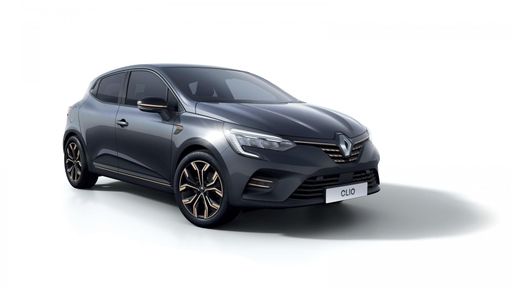 @ Renault Group Media
@ Renault Group Media
Renault Clio
Citroen C3
The Citroën C3 exudes a quirky charm with its distinctive design and bold colour options, making it stand out in the crowded hatchback market. Its interior is crafted with comfort in mind, offering plush seating and a host of modern technology features to enhance the driving experience. The C3's compact size makes it an ideal choice for urban commuting, effortlessly navigating through city streets while maintaining a sense of style and practicality.
details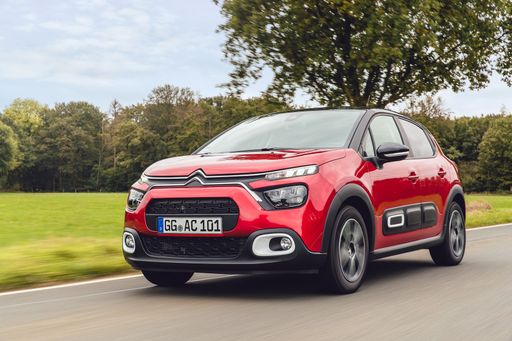 @ Citroën / Stellantis Media
@ Citroën / Stellantis Media
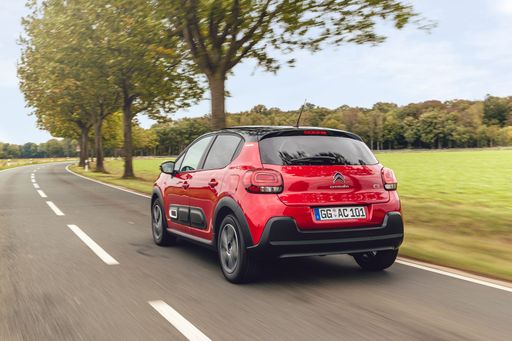 @ Citroën / Stellantis Media
@ Citroën / Stellantis Media
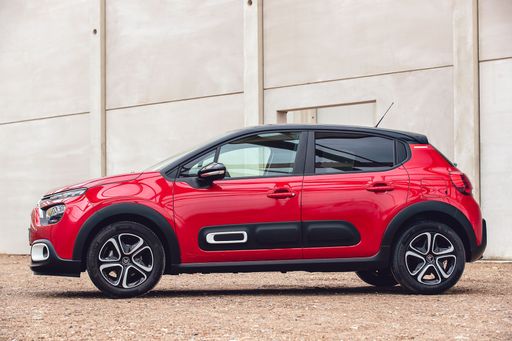 @ Citroën / Stellantis Media
@ Citroën / Stellantis Media
 @ Citroën / Stellantis Media
@ Citroën / Stellantis Media
Renault Clio
The Renault Clio continues to impress with its sleek design and agile handling, making it a standout choice in the compact car segment. Inside, it offers a surprisingly spacious and comfortable cabin, crafted with high-quality materials that enhance the driving experience. Its fuel efficiency and reliable performance make it an attractive option for both city commuting and longer journeys.
details @ Renault Group Media
@ Renault Group Media
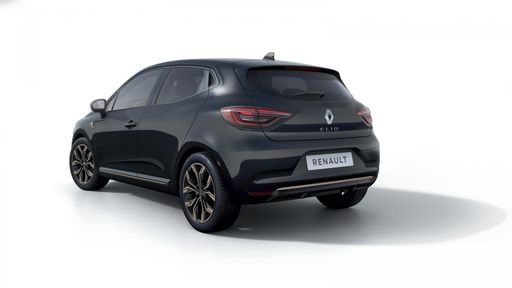 @ Renault Group Media
@ Renault Group Media
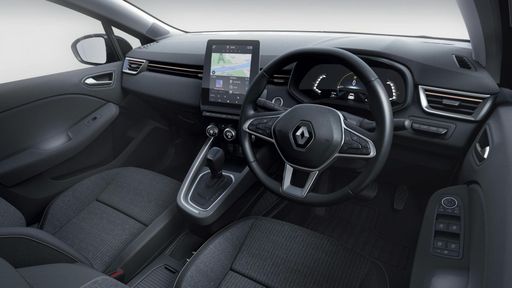 @ Renault Group Media
@ Renault Group Media
 @ Citroën / Stellantis Media
@ Citroën / Stellantis Media
|
 @ Renault Group Media
@ Renault Group Media
|
|
|
|
Costs and Consumption |
|
|---|---|
|
Price
13700 - 23800 £
|
Price
16600 - 23000 £
|
|
Consumption L/100km
5 - 5.6 L
|
Consumption L/100km
4.3 - 5.3 L
|
|
Consumption kWh/100km
16.6 - 17.2 kWh
|
Consumption kWh/100km
-
|
|
Electric Range
206 - 324 km
|
Electric Range
-
|
|
Battery Capacity
-
|
Battery Capacity
0.60 kWh
|
|
co2
0 - 126 g/km
|
co2
97 - 121 g/km
|
|
Fuel tank capacity
44 L
|
Fuel tank capacity
39 - 42 L
|
Dimensions and Body |
|
|---|---|
|
Body Type
SUV
|
Body Type
Hatchback
|
|
Seats
2 - 5
|
Seats
5
|
|
Doors
5
|
Doors
5
|
|
Curb weight
1226 - 1518 kg
|
Curb weight
1124 - 1331 kg
|
|
Trunk capacity
310 L
|
Trunk capacity
301 - 391 L
|
|
Length
4015 mm
|
Length
4053 mm
|
|
Width
1755 mm
|
Width
1798 mm
|
|
Height
1567 mm
|
Height
1440 mm
|
|
Max trunk capacity
1220 L
|
Max trunk capacity
979 - 1069 L
|
|
Payload
227 - 423 kg
|
Payload
398 - 406 kg
|
Engine and Performance |
|
|---|---|
|
Engine Type
Petrol, Electric, Petrol MHEV
|
Engine Type
Full Hybrid, Petrol
|
|
Transmission
Manuel, Automatic
|
Transmission
Automatic, Manuel
|
|
Transmission Detail
Manual Gearbox, Reduction Gearbox, Dual-Clutch Automatic
|
Transmission Detail
Automatic Gearbox, Manual Gearbox
|
|
Drive Type
Front-Wheel Drive
|
Drive Type
Front-Wheel Drive
|
|
Power HP
101 - 113 HP
|
Power HP
67 - 143 HP
|
|
Acceleration 0-100km/h
9.9 - 12 s
|
Acceleration 0-100km/h
9.3 - 17.1 s
|
|
Max Speed
125 - 183 km/h
|
Max Speed
160 - 174 km/h
|
|
Torque
120 - 205 Nm
|
Torque
95 - 205 Nm
|
|
Number of Cylinders
3
|
Number of Cylinders
3 - 4
|
|
Power kW
74 - 83 kW
|
Power kW
49 - 105 kW
|
|
Engine capacity
1199 cm3
|
Engine capacity
999 - 1598 cm3
|
General |
|
|---|---|
|
Model Year
2024 - 2025
|
Model Year
2023 - 2025
|
|
CO2 Efficiency Class
D, A, C
|
CO2 Efficiency Class
C, D
|
|
Brand
Citroen
|
Brand
Renault
|
What drive types are available for the Citroen C3?
The Citroen C3 is offered with Front-Wheel Drive.
The prices and data displayed are estimates based on German list prices and may vary by country. This information is not legally binding.
